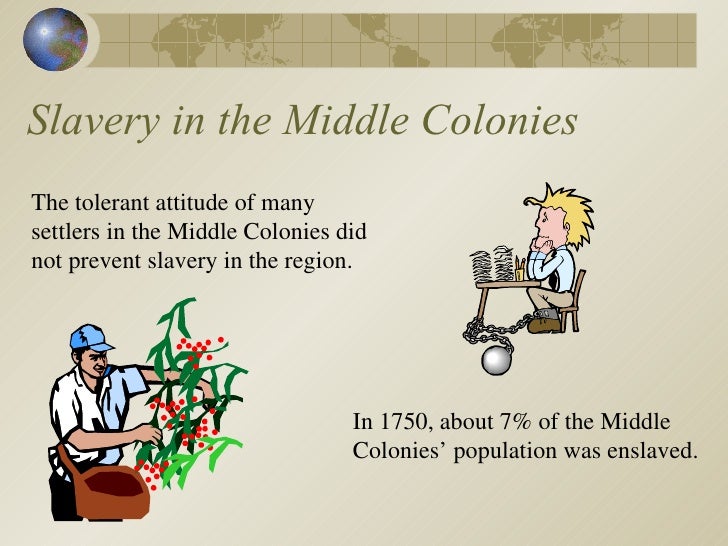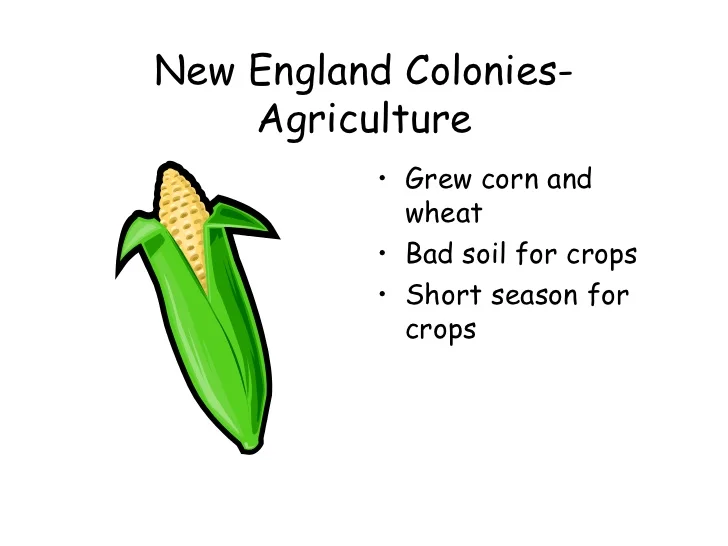How did the 13 colonies make money

Trade in the Colonies. Trade in the Colonies: Colonialism, Triangular Trade, Mercantilism, Trade, Industries and Plantations Trade in the Colonies The original 13 colonies were divided into the New England, Middle and Southern regions.
Each one prospered by trade in the colonies. The different products used for trade in the colonies are described in this article. Trade in the Colonies - Natural Resources and Raw Materials Trade in the colonies was determined by the climate and also by the different types of soil.
Farming was an important trade in the colonies and the choice of crops was dictated by these two critical elements. Other types of Trade in the colonies were determined by the geography - close proximity to the sea and rivers led to the development of the fishing industry. The natural resources also impacted trade in the colonies. The lush forests provided wood for various trade items, iron ore was used as a basis for trade using this material.
Trade in the Colonies was made possible by the their surplus of raw materials. Refer to Colonial Times for full descriptions of each of the trades and industries of Colonial America. Trade in the Colonies Chart The following chart details the Trade in the colonies of New England, the Middle Colonies and the Southern Colonies. The figures relate to the annual average values for each of the commodity exports.
Refer to Colonial Times for full descriptions of each of the trades, industries and commodities of Colonial America. The geography of New England consisted of mountains thick with trees, rivers and poor rocky soil that was difficult to farm and unsuitable for crops.
The natural resources available for trade in the colonies of New England included fish, whales and forests. Items used for trade in the New England colonies Fish, whale products, ships, timber products, furs, maple syrup, copper, livestock products, horses, rum, whiskey and beer. New England Ship Yards Trade in the Colonies - New Hampshire Trade in the New Hampshire Colony used the natural resources and raw materials available to develop trade in fish, timber, furs, ships and livestock.
The sawmills, shipyards and warehouses played a prominent role in the colony. Trade in the Colonies - Massachusetts The early colonists concentrated on farming and fishing but as time passed more lucrative markets were found and the colony became highly industrialized.
Trade in the Colonies ***
Towns emerged in Massachusetts including Salem, Gloucester, Marblehead, and Boston. The sawmills, shipyards, tanneries and warehouses played a prominent role in the colony. Trade in the Massachusetts Colony used the natural resources and raw materials available to develop trade in fish, timber, furs, wool, leather, whale products, ships and livestock.
Trade in the Colonies - Rhode Island Trade in the Rhode Island Colony used their large variety of natural resources and raw materials available to develop trade in fish, timber, furs, ships, and livestock including cattle. The easy access to water in the colony produced a flourishing fishing industry and the rich forests produced the timber for the lumber yards.
The major trade city in Rhode island was Providence. Trade in the Colonies - Connecticut Trade in the Connecticut Colony used the natural resources and raw materials available to develop trade in fish, timber, furs, dried meat, rum, ships and livestock.
Agriculture fared better in Connecticut than the other New England colonies due more favorable conditions and the colonists produced corn and wheat, using the mills to produce flour. The major trade cities in Connecticut were New Haven and Hartford. Other industries included dried meats, iron bars and rum. The geography of the Middle Colonies had a mix of the New England and Southern features but had fertile soil and land that was suited to farming. The Middle Colonies had a mild climate with warm summers and mild winters.
The natural resources available for trade in the Middle Colonies included good farmland, timber, furs and coal.
Iron ore was a particularly important natural resource. The Middle Colonies were the big food producing region that included corn and wheat and livestock including beef and pork.
Other industries included the production of iron ore, lumber, coal, textiles, furs and shipbuilding.
Life in the 13 Colonies (Story Time with Mr. Beat)Farming in the Middle Colonies Trade in the Colonies - Pennsylvania Trade in the Pennsylvania Colony used the natural resources and raw materials available to develop trade in corn and wheat and livestock including beef and pork. Other industries included the production of iron ore, lumber, coal, bricks, apples, beer and wine, textiles, rope, furs and shipbuilding.
Pennsylvania prospered industries related to iron, paper making, textiles and shipbuilding. Their agriculture wheat, corn, dairy and cattle. Towns and trade cities that emerged in Pennsylvania were Philadelphia, Lancaster and York.

Trade in the Colonies - Delaware Trade in the Delaware Colony used the natural resources and raw materials available to develop trade in corn and wheat and livestock including beef and pork. Delaware was able to focus on agriculture and the timber industries together with their ironworks and shipyards. The major trade city in Delaware was Wilmington.
How did the 13 colonies make their money
Trade in the Colonies - New York Trade in the New York Colony used the natural resources and raw materials available to develop trade in corn and wheat and livestock including beef and pork. Other industries included the production of iron ore, hemp, iron bars, horses, lumber, coal, textiles, furs and shipbuilding.
The New York colony specialised in their agricultural products and their iron works and ship building industries. The cities that emerged in New York were New York City and Albany. Trade in the Colonies - New Jersey Trade in the New Jersey Colony used the natural resources and raw materials available to develop trade in corn and wheat and livestock including beef and pork. Other industries included the production of iron ore, lumber, hemp, coal, textiles, furs and shipbuilding.
The iron industry was very strong in New Jersey and the iron works in the colony did well. Horse breeding also featured as a large industry. The trade cities that emerged in New Jersey were Princeton and Trenton. Trade in the Southern Colonies The Southern Colonies consisted of Maryland, Virginia, North Carolina, South Carolina and Georgia.
The geography of the Southern Colonies featured fertile soil, hilly coastal plains, forests, long rivers and swamp areas.
The natural resources available for trade in the Southern Colonies included Fish, forests timber and good agricultural land, farming on plantations was important. Items used for trade in the Southern Colonies colonies included Tobacco, cotton, rice, indigo dye , lumber, furs, farm products many of which were produced on the Slave Plantations.
Fleet of tobacco ships. Trade in the Colonies - Maryland Trade in the Maryland Colony used the natural resources and raw materials available to develop trade in Tobacco, cotton, rice, indigo dye , lumber, furs, farm products.
Maryland were also involved in the iron industry and shipbuilding. Their plantations produced rice, indigo and tobacco. The trade cities that emerged in Maryland were Annapolis and Baltimore. Trade in the Colonies - Virginia Trade in the Virginia Colony used the natural resources and raw materials available to develop trade in Tobacco, cotton, rice, indigo dye , lumber, furs, farm products, vegetables, clay and bricks.
The plantations in Virginia produced quantities of tobacco, rice and corn. The trade towns and cities that emerged in Virginia were Jamestown, Williamsburg and Richmond. Trade in the Colonies - North Carolina Trade in the North Carolina Colony used the natural resources and raw materials available to develop trade in Tobacco, cotton, rice, indigo dye , lumber including tar, pitch and turpentine, furs, silk, barrel staves and farm products.
The major town that emerged in North Carolina was Raleigh. Trade in the Colonies - South Carolina Trade in the South Carolina Colony used the natural resources and raw materials available to develop trade in Tobacco, cotton, rice, indigo dye , lumber, furs, farm products, silk and grapes and raisins.
Their plantations produced cotton, rice, indigo and tobacco. The major trade town that emerged in South Carolina was Charleston. Trade in the Colonies - Georgia Trade in the Georgia Colony used the natural resources and raw materials available to develop trade in Tobacco, cotton, rice, indigo dye , lumber, furs, barrel staves, pottery, farm products. Their plantations produced sugar, rice, indigo and tobacco. The major trade town that emerged in Georgia was Savannah.
Gold Opinions
Trade in the Colonies - Triangular Trade Triangular trade is a term that describes Atlantic trade routes between three different countries. The map shows raw materials and natural resources found in the 13 colonies were traded for manufactured products finished goods from England. The triangular trade route included Africa where slaves were treated as human commodities.
13 Colonies
England adopted trade policies that favored the flow of wealth from the colonies to the mother country England. The policy of Mercantilism favored England because the raw materials from the colonies were used to make different products in England - finished goods have a higher value than raw materials.
Also refer to Colonialism. History of trade, plantations, colonialism and colonization in the 13 Colonies Trade in the Colonies: Colonialism, Triangular Trade, Mercantilism, Trade, Industries and Plantations. Trade in the Colonies The original 13 colonies were divided into the New England, Middle and Southern regions. Trade in the Middle Colonies The Middle Colonies consisted of Pennsylvania, Delaware, New York, and New Jersey.
Trade in the Colonies Interesting Facts and information about Trade in the Colonies Trade in the Colonies history Fast Facts and info about Trade in the Colonies The Trade in the Colonies article is a great history resource for kids Social Studies Homework help for kids on Trade in the Colonies. Trade in the Colonies Trade in the New England Colonies Trade in the Middle Colonies Goods sent from the colonies Trade in the Southern Colonies An overview of the Trade in the Colonies with facts, information about the trade and economy of each of the 13 Colonies.
Economy, Industries and Trade in the Colonies. Fish, whale products, ships, timber products, furs, maple syrup, copper, livestock products, horses, rum, whiskey and beer.
Corn and wheat and livestock including beef and pork. Tobacco, cotton, sugar, rice, indigo dye via the Slave Plantations , lumber, furs, farm products. Tobacco Flour Rice Fish Wheat Indigo Corn Pine Boards Staves and Headings Horses. Map of Triangular Trade Routes. Trade in the Colonies - Colonial America - America - Facts - Great Britain - Colonists - England - English - Colony - Colonies - History - Kids - American Native Indians - US - Summary - Definition - Interesting - Information - Info - Events - Short - Kids - Children - Studies - US - United States - America - USA - French - English - British - Years - Social Studies Teaching resource - Social Studies - History - Teachers - Kids - Famous - Events - Colonial America - Trade in the Colonies.